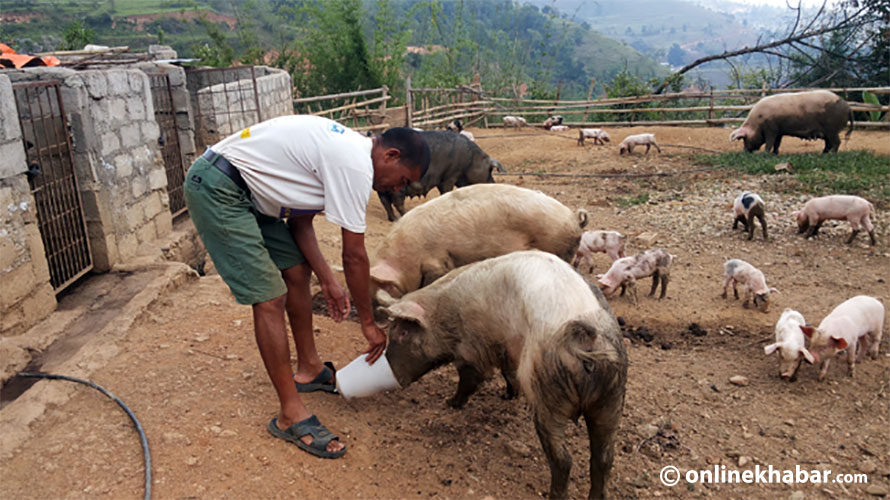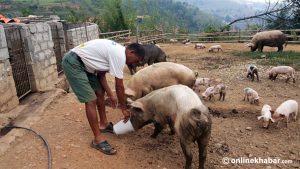
African Swine Fever is a highly contagious viral disease caused by a double-stranded DNA virus belonging to the Asfaviridae family that leads to hemorrhagic disorders. It generally affects domestic pigs and wild boars. Despite the name, African swine fever (ASF) does not exclusively affect Africa.
Although African swine fever has a limited host range and absent zoonotic potential, it poses a significant socio-economic impact as well as a threat to the swine industry, livelihoods, and food security. ASF outbreaks result in high mortality rates of up to 100 per cent and trade restrictions, leading to significant economic losses for pig farmers and related industries. As pig meat is one of the major food sources for many Nepali ethnic communities, African swine fever can disrupt pork production, leading to food shortages and increased prices.
The first outbreak of ASF in Nepal was reported on 30 March 2022. In 2022, more than six outbreaks were affecting about 15,000 pigs within 6 months all over Nepal. Hence the impact of African swine fever can be very devastating for developing countries like Nepal where agriculture and animal husbandry are the main occupations.
Highly contagious among animals

African swine fever spreads widely through direct contact with infected pigs, or their contaminated materials, or bites from infected ticks. Many researches have indicated the possibility of the transmission of African swine fever indirectly through contaminated feed, equipment, vehicles, or clothing.
The African swine fever virus is robust and can survive for extended periods in the environment. Wild boars act as reservoirs of the virus, due to which the virus becomes persistent in the environment and spreads at any point in time leading to the outbreak.
Various wide range of symptoms of ASF varying from mild to severe have been reported. This includes high fever up to 420C, loss of appetite, weakness and lethargy, red or purple skin lesions, particularly on the ears, snout, and limbs of a pig, diarrhoea, nausea and vomiting, resulting in respiratory distress which can be fatal if not treated properly within a few days to weeks after infection. Recent research has also linked abortion in pregnant sows with African swine fever.
There is no specific treatment or vaccine available for African swine fever till today. Many reports have indicated positive outcomes with supportive care, including fluid therapy and nutritional support, leading to an increase in survival rates in mildly affected pigs. However, the main focus remains on prevention and control measures to limit the impact of the disease within the region of the outbreak.
Prevention
Prevention of African swine fever requires a multi-faceted approach. The movement of pigs and people located in outbreak or risk zones should be restricted.
The equipment used in such zones should be disinfected and access to them should be controlled strictly. A reliable surveillance system should be established to monitor the signs and symptoms of the fever regularly to identify the outbreaks promptly.
Prompt actions such as quarantining the zone, euthanizing the infected pigs, etc should be taken if African swine fever cases are detected in any region to prevent further spread. Since ticks play an important role in the transmission of African swine fever, various control measures targeting ticks can help reduce the risk of transmission.
The infected carcasses and contaminated materials should be disposed of properly as they can pose environmental risks and further spread the virus if not managed properly.
Apart from these, public awareness and educational programs should be provided to pig farmers, veterinarians, and the public about African swine fever transmission, signs, symptoms, treatment, and preventive methods.




















